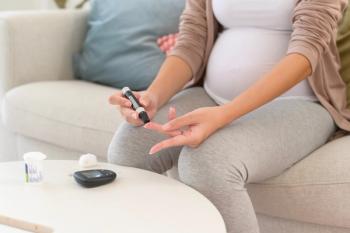
Study: Undiagnosed Diabetes May Be Significantly Less Than Previously Estimated
Current cases of undiagnosed diabetes may be more prevalent in certain minority groups, obese and older adults.
Researchers at the Johns Hopkins Bloomberg School of Public Health conducted a study that refutes government estimates of undiagnosed diabetes, suggesting these numbers are lower than previously thought. Detection for type 2 diabetes has improved over the past 30 years, possibly as a result of improved screening and awareness; however, not everyone benefits from these improvements.
According to the findings, published in Diabetes Care, there are diagnostic disparities among certain population subgroups, specifically older and obese adults, Mexican American and Asian American racial minority groups, and individuals without health care.
“It’s a real concern that certain populations are being missed by the health care system. This is likely a major reason why undiagnosed diabetes remains high in these groups,” said study first author Michael Fang, PhD, assistant professor in the Department of Epidemiology at the Bloomberg School, in the press release.
Diabetes affects nearly 14% of the US adult population and more than 25% of adults 65 years of age and older. Characterized by chronically elevated glucose in the bloodstream, diabetes has contributed to the obesity epidemic, weakening immunity, promoting inflammation, harming blood vessels, raising the risk of heart attacks and strokes. A worldwide health concern, diabetes can also cause retinopathy, kidney disease, and damage to the nerves.
Clinical guidelines recommend performing a standard fasting glucose test. If physicians see elevated glucose levels, they should confirm the results with a second fasting glucose test or an NbA1c test (glycated hemoglobin test). Traditionally, a physician would only diagnose diabetes after confirming elevated test results for both tests.
The study authors hoped to better understand the implications of undiagnosed diabetes to identify patients and treatment options. They analyzed diverse and nationally representative blood test results in the CDC’s National Health and Nutrition Examination Surveys.
Applying the 2-test current criterion on 30,492 individuals between 1988 and 2020, they diagnosed an individual with “confirmed undiagnosed diabetes” if they had elevated glucose results but no original diagnosis. According to the study, only 9.5% of the total US diabetes burden is undiagnosed.
Conversely, the results suggest that diagnosed diabetes cases rose from 4.6% between 1988 and 1994 to 11.7% in 2017-2020. Ultimately, diabetes has nationally increased because more people are being properly diagnosed, according to the study.
“Our findings suggest that the true figure is much lower and that providers in the US are doing a good job overall with diabetes screening and diagnosis,” said senior author Elizabeth Selvin, PhD, professor in the Bloomberg School’s Department of Epidemiology, in a press release. “Nonetheless, undiagnosed diabetes remains high in some subgroups, indicating that there’s still a long way to go.”
Fang further explained that traditional methods appear to capture undiagnosed diabetes in most adults. However, “the populations with undiagnosed diabetes may be more difficult to reach. Screening interventions targeting these groups may be needed," he said.
Reference
Study finds undiagnosed diabetes in U.S. less than half of current estimates. EurekAlert! August 16, 2022. Accessed on August 17, 2022. https://www.eurekalert.org/news-releases/961960
Newsletter
Stay informed on drug updates, treatment guidelines, and pharmacy practice trends—subscribe to Pharmacy Times for weekly clinical insights.








































































































































































































